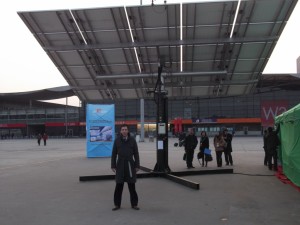Ballasted Solar Mounting Systems
Solar Tracking Systems: maximize yield by following the sun
Side-of-pole Mounts: solar panel mounts for poles
Top-Of-Pole Mounts: installed safe and free from dirt
Ground mount racks: robust way of installing panels on ground
Solar Roof Mounts: mounting structures for inclined or flat roof

 Solar Tracking System - SNEC Shanghai[/caption]
Solar Tracking System - SNEC Shanghai[/caption]
John Hartsough
on 12 Mar 2017Niclas
on 18 Mar 2017